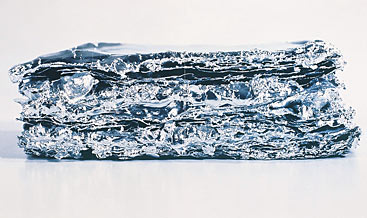
Born in 1954 in Boissy-l'Aillerie (FR)
Lives and works in Paris (FR)

1990
Colour photograph, cibachrome
250 x 420 cm
Year of Purchase: 1991
Tosani uses photography, that ‘third objective eye’, to incorporate it in the irreality born of too much clarity and definition too much precision, and scale, so that the subject has a discourse about the quality of things, and, in an endlessly repeated way, about this actual process of photography.
In his early days, he made up little stories telling of encounters (small figures trapped in ice cubes, blurred portraits pierced by writings in Braille…), then focused on classifying ordinary objects magnified to the point where the eye is neutralized to reveal their intrinsic physical qualities (Talons – Heels – series, 1987, the Cuillères – Spoons -, 1988…). By working subsequently on images associated with the body (Ongles – The Finger Nails), and by rendering the real out of proportion and contradictory, he carries on transforming the object photographed into a discourse about the characteristics of the medium. His photos are all like metaphorical pictures.
The transfigured millefeuilles (Vue – View, 1990), daubed with silver, lose all flavour as consumables in order to appear differently in the range of pleasure like strange misshapen jewels displaying the indecency of their details, the emptiness of their meaning. They may thus be read as geological structures made up of accumulated surfaces which, confronted by the photographic shot, play with the ambiguity of volume and the irreducibility of reality. The object has become the place of a ‘dazzling’ image where the detailed objectivity of the edible form is gnawed at by the transforming interplay of the picture (dimension, composition, matter, light) which nevertheless concedes nothing to pictorial effects.
Tosani’s series talk about fragment, skin, growth, things organic, and thus approach the body from the angle of excess and disproportion, without foundering in the aesthetically inclined inventory of nature as advocated by the German photographers belonging to the Neue Sachlichkeit movement (New Objectivity) in the 1920s, to whom the artist is akin in the manner of his technical know-how. He fixes the use value of the object and makes clever tricks meant for the imagination by using the various forms of disproportions of the photographic language.
Maïté Vissault